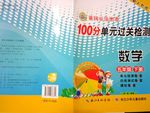题目内容
【题目】阅读下面短文,在空白处填入1个适当的单词或括号内单词的正确形式。
We face many difficulties day to day and when we get caught up in the storm of our emotions, we end up saying and doing things 【1】 we regret later. Neither at school 【2】 at home have we been shown how to deal with anger, sorrow or any negative emotion.
The knowledge of the breath 【3】 (teach) in the Art of Living course plays 【4】 important role. When you cannot handle your mind 【5】 (direct), through the breath you can handle it. When we understand the power of the breath, we can have a say over our thoughts and our 【6】 (feel). We can let go of anger and negative moods whenever we want to.
Practicing the power of breathing skills 【7】 (help) you get rid of negative emotions naturally. In fact, the frequency of anger and stress reduces hugely. Your ability 【8】 (accept) situations increases. Instead of 【9】 (react) hurriedly, you get the quality to respond to the situations and take 【10】 (reason) action. No matter what emotions come and go, learn to enjoy your life with your loved ones.
【答案】
【1】that/which
【2】nor
【3】taught
【4】an
【5】directly
【6】feelings
【7】helps
【8】to accept
【9】reacting
【10】reasonable
【解析】
这是一篇说明文。我们每天都会面对很多困难和问题,如果掌握了呼吸的技巧就可以调节自己的情绪,轻松面对问题。
【1】考查定语从句。分析句子结构可知,此处是定语从句关系词,先行词things在从句中充当宾语,应用关系代词。故填that/which。
【2】考查固定短语。此处考查短语neither…nor…“既不……也不……”。故填nor。
【3】考查非谓语动词。分析句子结构可知,此处应填非谓语动词,knowledge和teach之间是逻辑上的被动关系,故用过去分词作后置定语。故填taught。
【4】考查冠词。此处考查短语play a role in“在……中起作用”,又important是元音音素开头,给填an。
【5】考查副词。此处应填direct的副词形式修饰动词handle。故填directly。
【6】考查名词。根据our 判断此处应填feel的名词形式,又feeling作为“感情”时可数,故用该词的复数形式。故填feelings。
【7】考查时态。分析句子结构可知,此处是句子谓语动词,根据下文的reduces判断为一般现在时,又主语Practicing the power of breathing skills是第三人称单数,故动词用三单现形式。故填helps。
【8】考查不定式。句意:你接受环境的能力增加了。结合句意和句子结构可知,此处考查不定式作抽象名词的后置定语,ability to accept situations“接受环境的能力”。故填to accept。
【9】考查动名词。此处应填react的动名词形式作为介词of的宾语。故填reacting。
【10】考查形容词。此处应填形容词修饰名词action。故填reasonable。
第1小题考查定语从句关系词。确定定语从句关系词一般分为三步:找出先行词;分析先行词在从句中充当什么成分;考虑特殊情况。以本题为例:
找出先行词:things
分析先行词在从句中充当什么成分:先行词things在从句____1____ we regret later.中充当主语,应用关系代词
考虑特殊情况:无
故填that/which

 智慧课堂密卷100分单元过关检测系列答案
智慧课堂密卷100分单元过关检测系列答案